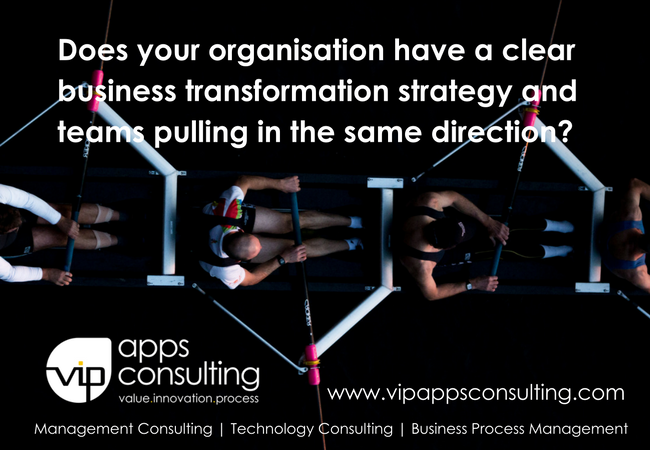Today, for companies to stay competitive, they need to innovate continuously. Transformation programs are triggered across all industries to meet new customers’ expectations, improve products, implement new technology and create agile organisation ready to adopt the innovation. Leading change initiatives is hard. Nearly 70 per cent of change programs fail to achieve their goals, proving testimony of the difficulty of managing and leading change and transformation programs. Companies understand that the ability to deliver successful change is critical to gain competitive advantage. In this post, we present the key areas you need to consider for developing more effective change management strategies rethinking traditional change processes and shifting mindsets that will get employees on board and solve the mystery behind conquering the human side of change programs.
Why Change Initiatives Fail
In a previous post, we discussed how to manage change for technology innovation projects. Success at small and large-scale programs goes beyond the technological solutions and requires a comprehensive understanding of the company’s culture, values and people. Every change starts with an idea, a vision of what could create a tangible benefit for an organisation. However, ideas are not enough. Innovation and change is the process of transforming a vision into a new reality that delivers the promised benefits.
Change programs fail for many reasons, among which we can usually find a lack of clear and defined objectives and milestones to measure progress, insufficient funding or lack of top-down organisation commitment.  All these countless reasons, produce change fatigue in organisations, and this becomes the leading causes of the high failure rates. Traditional change programs focused on the extrinsic motivations and project leaders do not include in their plans the human side of change. Traditional change projects underestimated the human factor and focused solely on the process and tools. Building superior and modern change capabilities is a competitive advantage and overcoming these challenges, requires a comprehensive and structured change effort that includes the right mix of business processes, governance and analysis of the organisation behaviours and belief systems. To beat the change fatigue and keep employees engaged in the change and transformation process, project leaders, need to consider whether this change process offers employees new challenges and responsibilities. We all feel more engaged when stretching our skills and building expertise. Understand what motivates people. When you ask your organisation to change, you are demanding something quite ambitious that it is to change their mental model and way of working. People are more likely to be inspired to change if they meet intrinsic needs like growth and meaning. What follows is a guiding list of principles for a people-centred change and transformational project, that will allow managers to communicate more effectively these initiatives and obtain the desired buy-in of the workforce.
All these countless reasons, produce change fatigue in organisations, and this becomes the leading causes of the high failure rates. Traditional change programs focused on the extrinsic motivations and project leaders do not include in their plans the human side of change. Traditional change projects underestimated the human factor and focused solely on the process and tools. Building superior and modern change capabilities is a competitive advantage and overcoming these challenges, requires a comprehensive and structured change effort that includes the right mix of business processes, governance and analysis of the organisation behaviours and belief systems. To beat the change fatigue and keep employees engaged in the change and transformation process, project leaders, need to consider whether this change process offers employees new challenges and responsibilities. We all feel more engaged when stretching our skills and building expertise. Understand what motivates people. When you ask your organisation to change, you are demanding something quite ambitious that it is to change their mental model and way of working. People are more likely to be inspired to change if they meet intrinsic needs like growth and meaning. What follows is a guiding list of principles for a people-centred change and transformational project, that will allow managers to communicate more effectively these initiatives and obtain the desired buy-in of the workforce.
Guiding Principles to Ensure the Success of Change Initiatives
Create a Top-Down Social Change Flow: Change in general makes people uneasy at all levels of an organisation. Today even more with the implementation of advanced technologies where at the core of every company’s strategy is the digitalisation of the entire value chain. Managers need to find ways to reconcile the demand of digital business models as they create organisations with a more human and social sense. The top-level executive management teams must be the first one to change, and challenge and motivate the rest of the organisation creating the sense of purpose and a common goal. They need to reflect alignment and commitment of the new direction and being actively conscious of the new culture to introduce. Change will eventually occur at the bottom of the organisation. Project leaders will not make the change happen by themselves and require stakeholders that will champion and support the initiative. Align around the overall vision and actively engage them in the process and minimise change fatigue by providing the organisation with new capabilities, emphasising continuous learning, will eventually make everybody feel accountable
Run a Cultural Assessment: like in the case of new technology implementation, you need to run a systems assessment before selecting the solutions, change leaders need to run a cultural diagnosis where a detailed plan is devised for the transition. This analysis will allow you to identify your organisation’s belief systems and embedded behaviours from where you begin mapping to the new vision.
 Continuously Communicate the New Vision: personalise to your organisation the approach to communicating change, where bespoke storytelling is crafted framing the message in terms of employees gains and highlighting development opportunities, for each layer of the organisation. Reinforce core messages through constant and in time inspirational messages, where people arise from behind the new task and business processes in place, advocating for the change and creating a social enterprise experience.
Continuously Communicate the New Vision: personalise to your organisation the approach to communicating change, where bespoke storytelling is crafted framing the message in terms of employees gains and highlighting development opportunities, for each layer of the organisation. Reinforce core messages through constant and in time inspirational messages, where people arise from behind the new task and business processes in place, advocating for the change and creating a social enterprise experience.
People at The Core of Your Change Management Efforts
In today’s complex business environment, project leaders need to be able to anticipate the impact of market adjustments, changes in business strategy, new regulatory requirement or the implementation of new technology. Traditional approaches to change program are no longer enough to respond to constant market disruption. These approaches failed to get people truly on board and to get them to adopt behaviours that are aligned with the new vision. By taking a holistic path to change initiatives, where the human and cultural size of the organisation is considered, these leaders can create an agile organisation ready to embrace the next business transformation project.

VIP Apps Consulting team has extensive experience within the leasing financial services industry with the knowledge, capabilities and operational experience, to help organisations assess and implement the required process changes. Keep up to date with the latest technology trends and other industry news by following us on LinkedIn.






